P5140121
Plantnr Fnsditis is on inflammation of the plantar aponeurosis. Pain and inflammation are generałly felt at its' origin on the epicondylc of the calcaneous (anterior aspect of calcaneous).
1\vo strips are Applied to the plantar surface of the foot. Strip one using a fan cut, will be placed along the length of the plantar aponeurosis with fuli tension removed. On the plantar surface fuli tension can be removed with little or no irritation to the skin, duc to skin thickness. Strip two, using a mechanical correction tcchnique, will be placed across the mid-arch to assist with metatarsal arch support. It is highly recommended that both strips be used The effectiveness of the technique is compromised with the use of only one strip.
This teehnique can be applied multiple limes. Use of water resistant Kinesio Tex is recommended. During acutc inflammation the tcchnique should indudc the Achilles tendon and plantar aponeurosis for maximum effect.
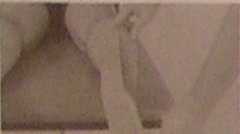


V
Measure the entire length of from the metatarsal heads to approximate!y 2 inches above the musculo-tendinous junction of the gastrocnemius and Achilles. On one end cut a 4 strip fan technique from the metatarsal heads to the calcaneal tubercle. When first utilizing this technique remember that all of the
tension will be rcmovcd from the Kinesio Tex, so cut your strip a little shorter than measured.
Photo on right.
The Kinesio strip paper backing is tom just
superior to the fan. The Kinesio strip is begun on the heel with the foot in dorsi flexion.
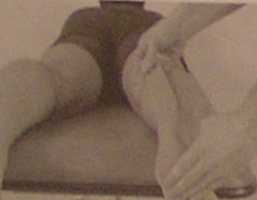
While holding the tape which has been applied to the heel, to ensure no tension will be added to the
tape, apply tension over the Achilles tendon. Apply a tendon correction technique using moderate, 25-50 % of available tension over the Achilles'. For rcview see correction technique.
When the Kinesio strip has reached the musculo-tendinous junction, lay down the end of the Kinesio strip with very light to light, 10-25% of available
tension, unti! the last two inches which is laid down

movement.
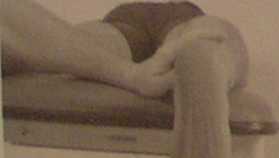
Keeping the foot in dorsi flexion begin by applying fuli, 100% of available tension on one of the four
strips which have been cut. Place this strip from the calcaneous to the space between the first and second ray (toe) on the metatarsal head. Make sure you
acdvate the glue before additional strips are placed.


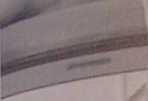
Continue the same process by placing a strip o( Kinesio Tex betwecn the sccond and third, third and fourth and fourth and fifth toes.

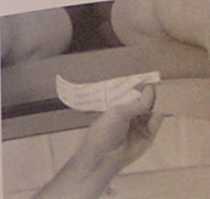
The second Kinesio Strip is a metatarsal arch mechanical correction. For review sce metatarsal arch technique.
Have the patient move into foot dorsiflexion apply the base of the Kinesio 1 strip with no tension ncar the 5th metatarsal base on the lateral aspcct of the foot. The edge of the Kinesio strip begins on the base of the 5th and finishes up the shaft of the bonę.
Prior to tape application you may want to initially estimate the path of the Kinesio strip to assist in proper placemcnt. The Kinesio strip is angled for the tarsal metatarsal joint on the medial aspcct of the foot.
Have the patient relax their foot. Apply light to moderate, 25-50% of available tension from the base of the 5th metatarsal to the tarsal navicular joint region. The Kinesio strip is applied using the mechanical correction technique, tension and down-ward pressure. The amount of tension and down-ward pressure is determined by the practitioncr and the size of the patient.
When applied correctly, the patients foot should show signs of "crinkles" in the metatarsal arch region.
Completed Plantar Fasciitis Kinesio Technique.
%
195
Wyszukiwarka
Podobne podstrony:
P5140120 Plantar Fasciitis Plantar Fasciitis is an inflammation of the plantar aponeurosis. Pain and
5 (1921) BIG 4 The Big 4 is world renowncd for reliability. It is buiit throughout of the finest mat
Bibliografia 247 i Wombiewo koscjanskogo ujezda, Studies on Sorls of the State Farm Parzęczewo and
i 367 NOTESTHE STORKS Page 29. On account of the ravages it makes among noxious ani-mals, the stork
attorney-in-fact, including the natural person acting on behalf of the attorney-in-fact which is a l
63 (134) 6Diagnosis The diagnosis is based on appearance of the lesions. The differential diagnosis
new zealand Briara is on her way to her best friend s house. They are going to play in the park. 21
82689 system 06 A Few Words about Apoxyomenos The picture on the cover of this book is from a photog
P5140073 Trochanteric Bursitis Trdchanteric bursitis is a common condidon of the hip which results i
00082 ae3029ab37e06a00bafcfcfbbff716 81Adaptive Hierarchical Bayesian Kalman Filtering There is al
skanowanie0075 (3) 12.1.1.5. Real Iife vs. classroom listening In real life listening is easier beca
1. Introduction New Zealand is a Member Administration of the International Telecommunications Union
2013 Editor: KAŹMIERCZAK).CONCLUSIONS Laparoscopy is an opportunity for patients to less pain and fa
2013 SYSTEMS SUPPORTING PRODUCTION ENGEINEERING The experiment also focused on analysis of the resul
Institute ot Noise Contro! hngineenng. Berglund, B., Lindvall, T., and Schwela D. H. on behalf of th
skanowanie0075 (3) 12.1.1.5. Real Iife vs. classroom listening In real life listening is easier beca
więcej podobnych podstron